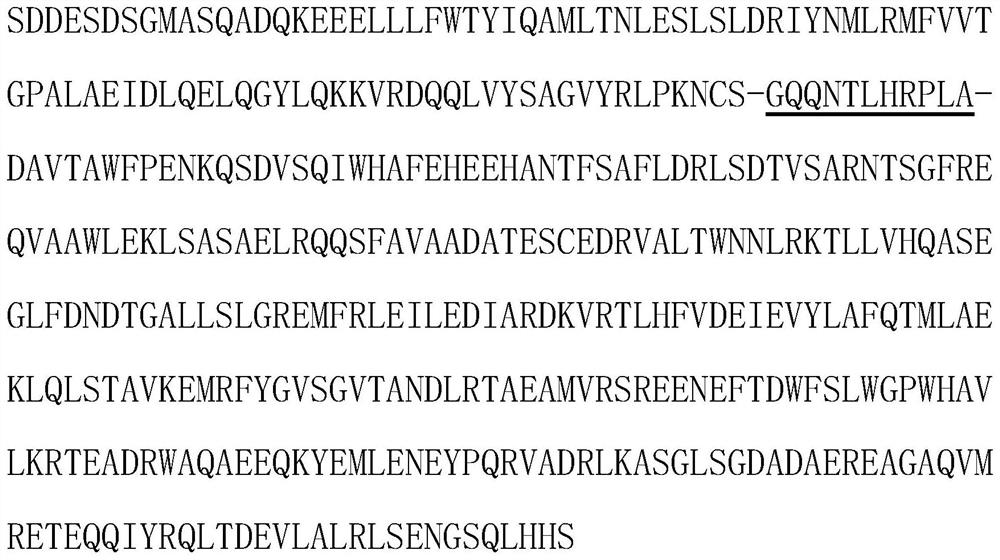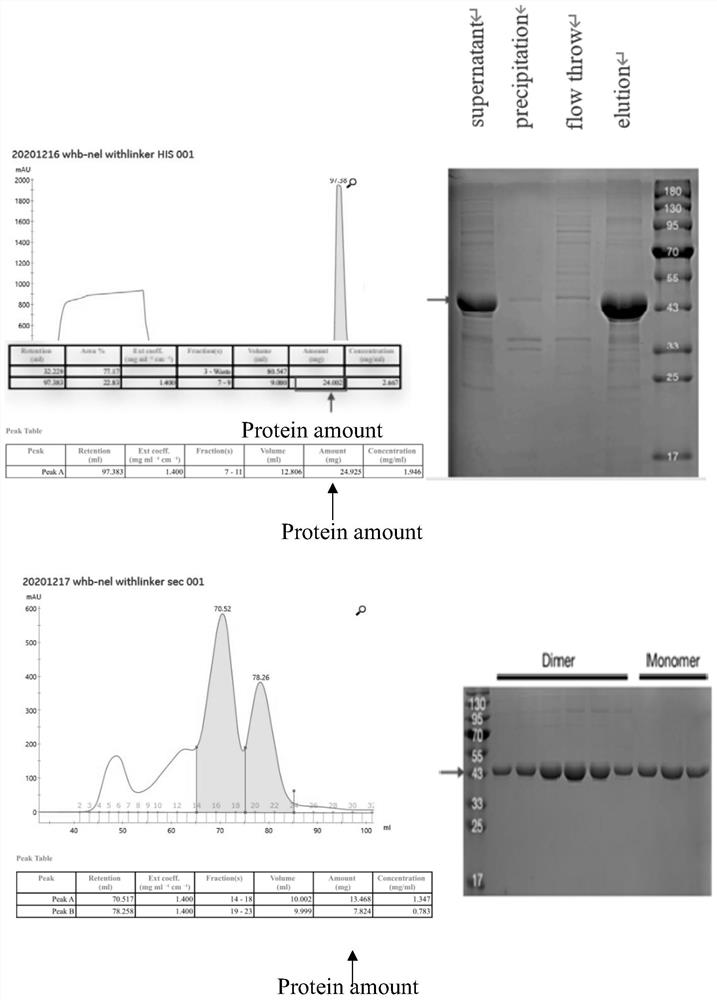Bio-PROTAC artificial protein targeting UBE2C
A protein and artificial technology, applied in DNA/RNA fragments, animal/human peptides, recombinant DNA technology, etc., which can solve the problems of lack of small molecule inhibitors, difficulty in developing inhibitors, and missegregation of chromosomes.
- Summary
- Abstract
- Description
- Claims
- Application Information
AI Technical Summary
Problems solved by technology
Method used
Image
Examples
Embodiment 1
[0047] Example 1. Prokaryotic expression and isolation and purification of bio-PROTAC
[0048] The prokaryotic expression and separation and purification steps of the bio-PROTAC of the present invention are as follows:
[0049] (1) Prokaryotic expression vector construction:
[0050] The bio-PROTAC can be expressed using the pet28 series of prokaryotic vectors. First, pet28a was reverse-PCRed to obtain a linear vector. Use the 15bp-20bp sequence at the end of the linearized vector as a homologous sequence, and add it to the 5' end of the gene-specific forward / reverse amplification primer sequence, and then use the target gene as a template to amplify to obtain homologous Sequence inserts. Mix the linearized vector and the insert in proportion, and mix the linear template and the insert at a molar ratio of 1:2, then add 1 μl of Exnase II, 2 μl of 5×CE II Buffer, and use dd H 2 Make up O to 10 μl, and react at 37°C for 30 minutes to complete the recombination reaction. Then...
Embodiment 2
[0055] Example 2. In vitro ubiquitination activity assay
[0056] 0.25μM E1 (mouse UBA1, 120Kd), 2μM E2 (UBE2D2, 19.6Kd), 0.5μM E3 (bio-PROTAC WT , bio-PROTAC CA , 43.5Kd), 50μM Ub (human Ub, 8.6Kd), 5mM MgCl, 2.5mM ATP and 2MmUBE2C (20Kd) were mixed and incubated in PBS buffer (pH7.4) at room temperature. Samples were taken at different time points, and the reaction mixture was added to an equal volume of 2*SDS-PAGE loading, and heated in a boiling water bath for 10 min. Afterwards, 12% SDS-polyacrylamide gel was used for electrophoresis, and the gel after electrophoresis was stained with Coomassie Brilliant Blue staining solution, and then decolorized overnight in acetic acid destaining solution. Finally image the gel with a gel imager.
[0057] The result is as Figure 4 As shown, the bio-PROTAC (wild type) with the correct sequence can ubiquitinate UBE2C in vitro, while the mutant (the cysteine at position 184 of the bio-PROTAC protein sequence provided by this paten...
Embodiment 3
[0059] Example 3. Verification of the activity of bio-PROTAC in degrading exogenous UBE2C in cells
[0060] (1) Construction of eukaryotic expression vector: Since the protein itself is difficult to pass through the cell membrane, it is necessary to construct a eukaryotic expression vector first. The construction method is similar to the construction method of the prokaryotic expression vector described above, and will not be repeated here. This bio-PROTAC can be constructed using the PCDNA3.1 series vectors.
[0061] (2) Transfection of eukaryotic vector into cells: inoculate a 6-well plate with culture medium without antibiotics one day before transfection, and perform transfection when the cell density grows to 70%-90% on the second day. It is recommended to use lipo 2000 (thermofisher) as transfection reagent. Cell culture medium should be replaced with opti-MEM before transfection. For transfection, first dilute the DNA and 8 μl lipo 2000 with 250 μl opti-MEM respectiv...
PUM
 Login to View More
Login to View More Abstract
Description
Claims
Application Information
 Login to View More
Login to View More - R&D
- Intellectual Property
- Life Sciences
- Materials
- Tech Scout
- Unparalleled Data Quality
- Higher Quality Content
- 60% Fewer Hallucinations
Browse by: Latest US Patents, China's latest patents, Technical Efficacy Thesaurus, Application Domain, Technology Topic, Popular Technical Reports.
© 2025 PatSnap. All rights reserved.Legal|Privacy policy|Modern Slavery Act Transparency Statement|Sitemap|About US| Contact US: help@patsnap.com



